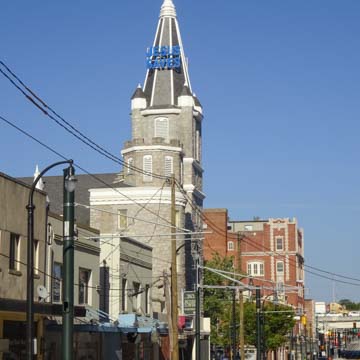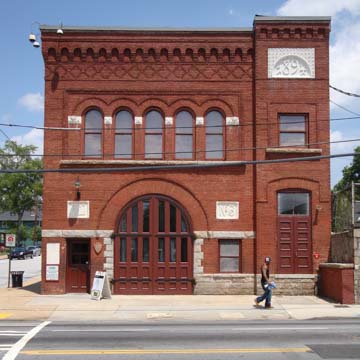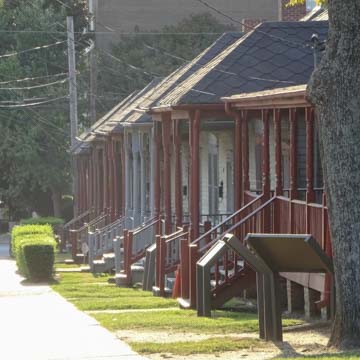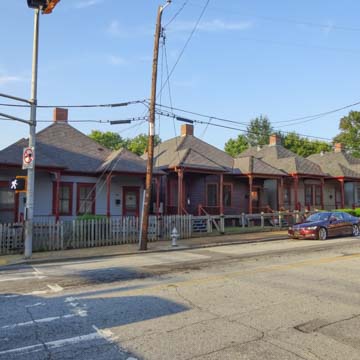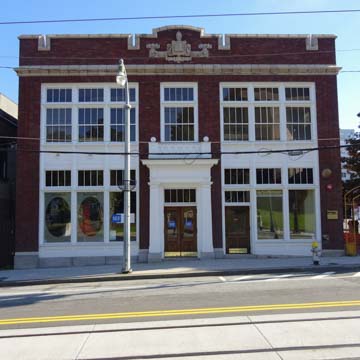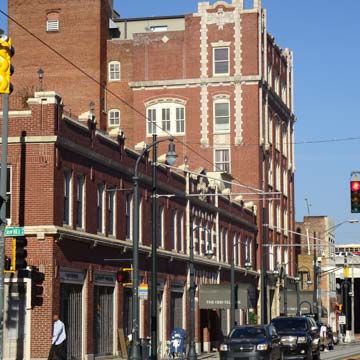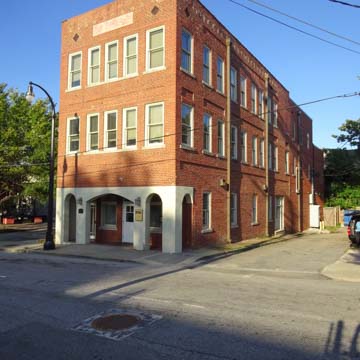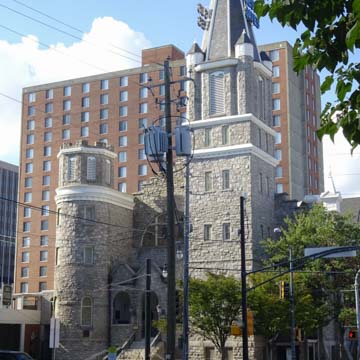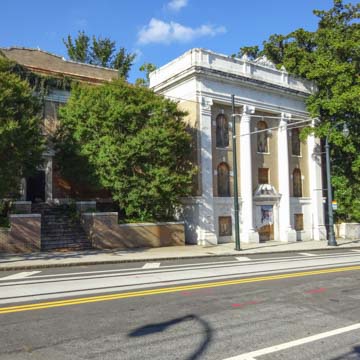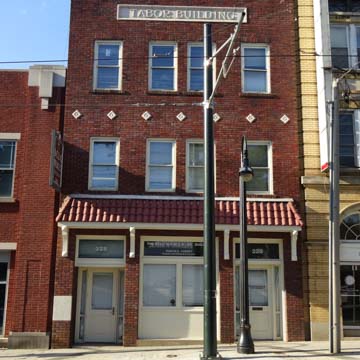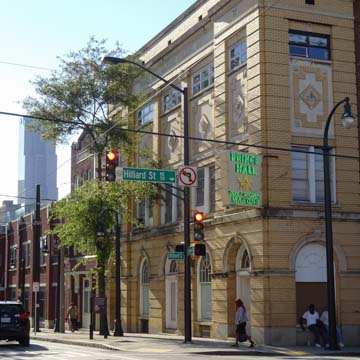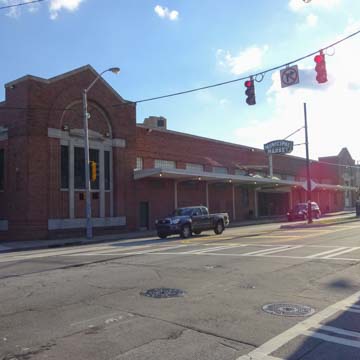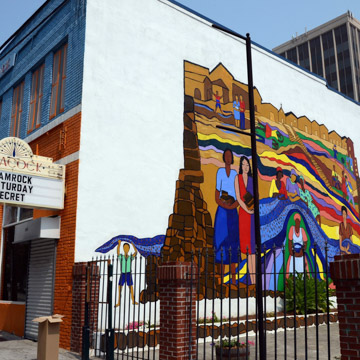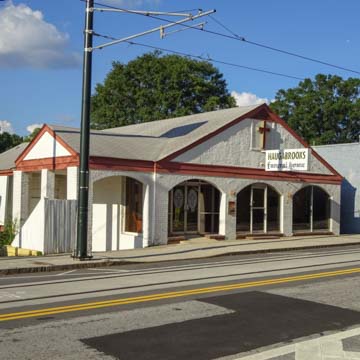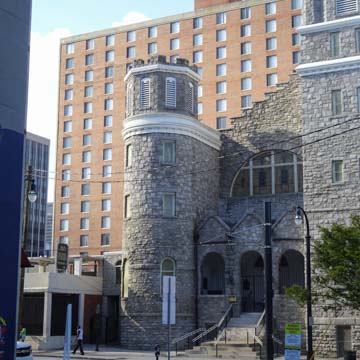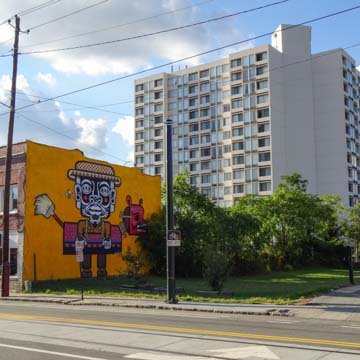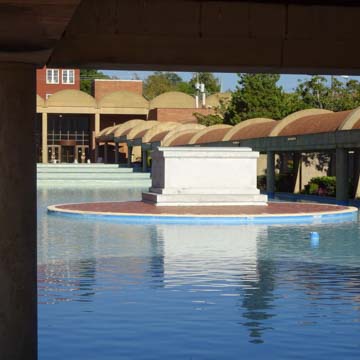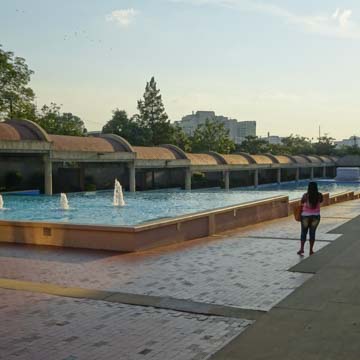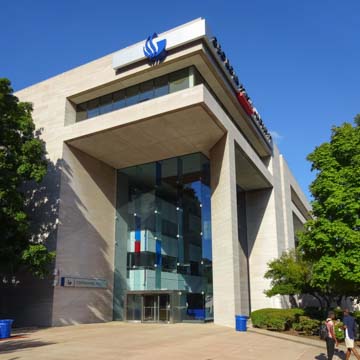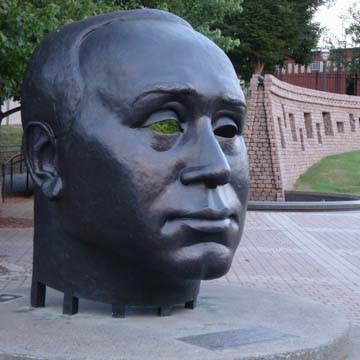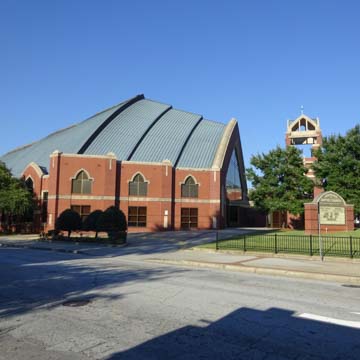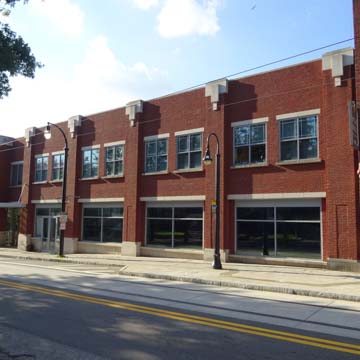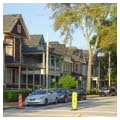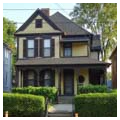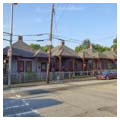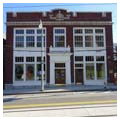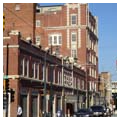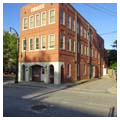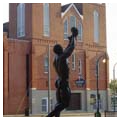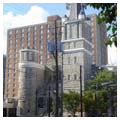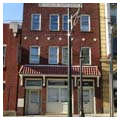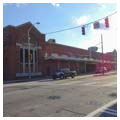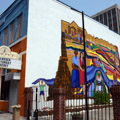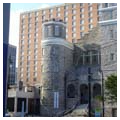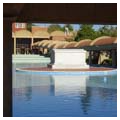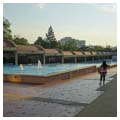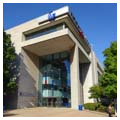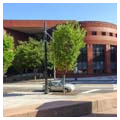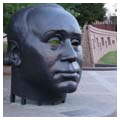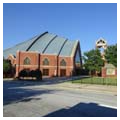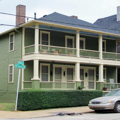The Sweet Auburn Historic District stretches just over a mile along Auburn Avenue east of Peachtree Street in downtown Atlanta. Originally known as Wheat Street, Auburn Avenue was renamed in 1893, and over the course of the next few decades developed as a center of African American commercial, cultural, and spiritual life after restrictive Jim Crow legislation pushed the city’s Black population eastward into what is today known as the Old Fourth Ward. Auburn Avenue became home to an emerging Black middle class, whose successful businesses ranged from family-owned groceries, restaurants, and hair salons to banks, insurance companies, and national corporations. Civic and political leader John Wesley Dobbs coined the phrase “Sweet Auburn,” referring to what a 1956 Fortune magazine article called “the richest Negro street in the world.”
Among the larger enterprises along Auburn Avenue were three significant financial institutions. The first was Atlanta Life Insurance, the country’s second-largest Black insurance company, which was founded in 1905 by Alonzo Herndon, a former enslaved person who became Atlanta’s first African American millionaire. In 1920 the company moved to a three-story brick building at 140 Auburn and seven years later hired contractor A. H. Aiken to construct a Classical Revival facade; in 1936, Atlanta Life expanded into a similarly styled two-story annex on the west elevation. Another insurance company, Standard Life, founded in 1911 by Texan Heman Perry, was located at 200 Auburn. Finally, Citizens Trust Bank opened on Auburn in 1921 and later became the first African American–owned bank to be admitted to the Federal Deposit Insurance Corporation and, in 1948, the first to join the Federal Reserve Bank; the bank headquarters relocated to a new facility on Piedmont Avenue in the mid-1960s.
Other significant institutions included the offices of the Atlanta Daily World, founded in 1928 as the city’s first African American newspaper, and where publisher Cornelius Adolphus Scott had a 63-year career. The paper operated out of its two-story brick building at 145 Auburn until 2008. Across the street was Atlanta’s first Black-owned office building, the Rucker Building (1904), built by businessman and politician Henry A. Rucker at the corner of Auburn and Piedmont avenues. This three-story brick structure featured ground-floor retail space and professional office space above; it was demolished in 2001 and is now a parking lot.
Auburn Avenue was also home to a variety of smaller businesses, such as markets and funeral parlors, as well as social clubs, fraternities, and entertainment venues. The Odd Fellows Building and Auditorium (1912–1913, William A. Edwards) at the corner of Auburn Avenue and Bell Street is a Jacobean Revival structure with terra-cotta ornamentation on its brick facade; its 1,296-seat auditorium and roof garden formed a center of social life for Black Atlantans. The Renaissance Revival Masonic Lodge (1937, Charles Hopson and Ross Howard; 1941 addition) at the northeast corner of Auburn Avenue and Hilliard Street became the headquarters of the Southern Christian Leadership Conference (SCLC) in 1960. The upscale Top Hat Club opened at 186 Auburn in the late 1930s. The two-story brick building with two storefronts and recessed entrance was rechristened the Royal Peacock in 1949 and hosted such famous musical acts as Dizzie Gillespie, Louis Armstrong, Aretha Franklin, Ray Charles, Gladys Knight, and B. B. King. It continues to serve as a nightclub.
The eastern end of Auburn Avenue was more residential, and offered several houses of worship. The Wheat Street Baptist Church at 369 Auburn was founded in 1869 but its current edifice, a late adaptation of the Gothic Revival style, was built following a massive 1917 fire that destroyed much of northeastern Atlanta. The Big Bethel African Methodist Episcopal Church (220 Auburn) is the congregation’s third. Built in the 1880s, the structure was redesigned in its current Romanesque Revival appearance by architect J. A. Lankford and builder Alexander Hamilton. The brick Gothic Revival Ebenezer Baptist Church (1914–1922) at 407 Auburn was the congregation of Sweet Auburn’s most famous resident, Reverend Martin Luther King, Jr.
King was born in 1929 at 501 Auburn Avenue, a two-story Queen Anne residence with a single-story partial front and side porch that rests on a brick foundation. He resided here until 1941. Sweet Auburn was an integral location for the civil rights movement, with the Southern Christian Leadership Conference (SCLC) and the National Association for the Advancement of Colored People (NAACP) headquartered there. As these and other local voting rights organizations championed the civil rights movement, Auburn Avenue began to experience a decline in the mid-1960s. Shopkeepers began moving their businesses elsewhere in the city once legal barriers to integration were removed, and the construction of I-75/I-85’s downtown connector in the early 1960s, which split the street in half, also contributed to Sweet Auburn’s decline. The historic scale of the rows of two- and three-story commercial buildings was disrupted with block-long high-rises such as the Bethel and Wheat Street towers, planned in the 1960s and built in the early 1970s.
Efforts to revitalize the neighborhood in the 1970s and 1980s included Sweet Auburn’s designation as a National Historic Landmark, the creation of the Martin Luther King, Jr. National Historic Site, and the construction of the Martin Luther King, Jr. Center for Nonviolent Social Change (1979–1981). Elsewhere on Auburn Avenue are other centers dedicated to African American culture and history. In 1985, APEX (African American Panoramic Experience), a museum of African American culture founded in 1978, renovated the former Southern Schoolbook Depository Building (1910, Hentz and Reid) at 135 Auburn. At 101 Auburn is branch of the Atlanta public library system, the Auburn Avenue Research Library on African American Culture and History, built in 1994.
Despite the popularity of these attractions, the rest of Auburn Avenue continued to decline. In 1992, the National Trust for Historic Preservation declared it one of the country’s most endangered places, and the Georgia Trust for Historic Preservation included the street on its 2006 Places of Peril list. Efforts to revitalize the area have persisted, however, to increasing success. The district is now home to several works of public art, including sculpture and murals. The Sweet Auburn Festival, founded by civil rights leader Hosea Williams, has been held annually since 1984. There has also been increased development since the 2000s. Further contribution to the area’s revitalization is the 2014 completion of the Atlanta Streetcar, which runs through downtown Atlanta from the Centennial Olympic Park on the west to the Sweet Auburn Historic District.
References
Hamilton, Francis. “Sweet Auburn Avenue: The Triumph of the Spirit.” Master’s thesis, Georgia Institute of Technology, 2002.
Hatfield, Edward A. “Auburn Avenue (Sweet Auburn).” New Georgia Encyclopedia. Accessed August 26, 2019. https://www.georgiaencyclopedia.org/
Joye, Harlon E., Clifford M. Kuhn, and E. Bernard West. Living Atlanta: An Oral History of the City, 1914-1948. Athens: University of Georgia Press, 1990.
Pomerantz, Gary M. Where Peachtree Meets Sweet Auburn: The Saga of Two Families and the Making of Atlanta. New York: Scribner, 1996.
“Sweet Auburn District.” National Park Service. Accessed August 26, 2019. www.nps.gov.














